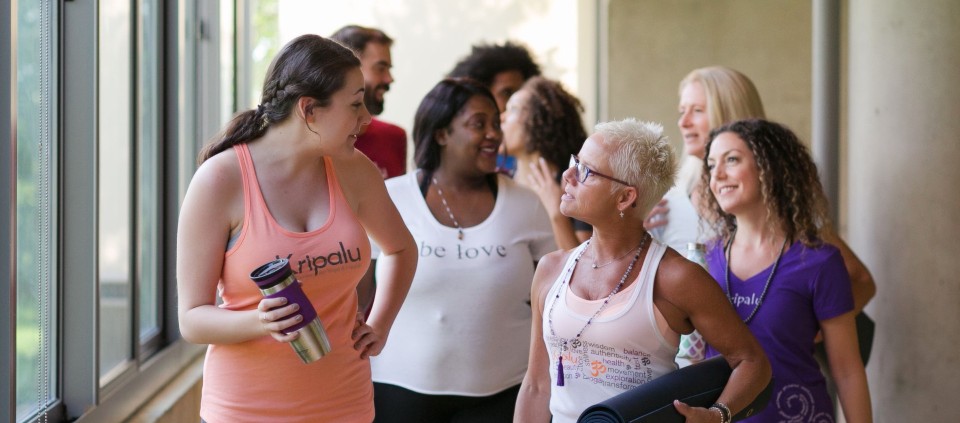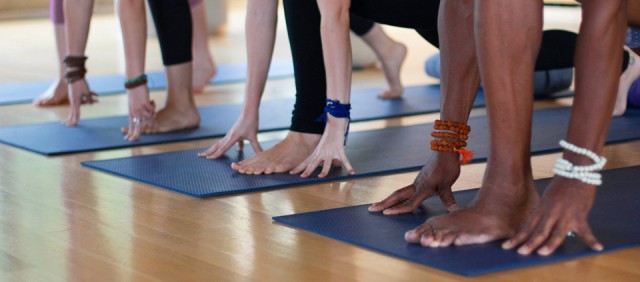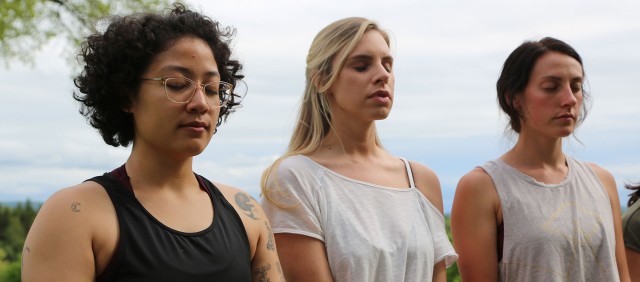8 Steps for Committing to Activism: The Yoga of Social Change

Updated June 2, 2020
Renowned teachers Seane Corn and Kerri Kelly are dedicated to exploring the relationship between personal transformation and social justice. Seane is cofounder of Off the Mat, Into the World® and the Global Seva Challenge, which “activates communities of yoga and wellness through fundraising and awareness efforts.” Kerri is the founder of CTZNWELL, “a movement to mobilize the wellness community into a powerful force for change.”
For Seane and Kerri, social activism aligns closely with the foundations of yoga. They offered these steps for mindfully engaging.
1. Begin with self-awareness.
It starts with radical self-awareness, not the kind that begins and ends on the mat, but an awareness of oneself as a part of something bigger. That includes acknowledging the privilege of wellness and doing what is needed to democratize health and well-being. We can acknowledge this on a personal level, a social and relational level, and a systems level.
2. Acknowledge and confront.
Yoga holds the complexity of our human experience. While we all understand the power of yoga to transform and create real healing in our lives, we also acknowledge that some people are struggling to survive, much less be well. We can’t just meditate racism away or end poverty through Seva trips. We need to confront the systems of oppression that are in the way of people being well so that everyone has what they need to thrive.
3. Practice listening.
Yoga is listening, especially to the most marginalized voices. And it’s speaking truth to power, even when it’s hard. To assist with this, CTZNWELL provides a downloadable guide, How to Have Hard Conversations.
4. Connect with your surroundings.
Yoga is being in deep, authentic relationship with all parts of ourselves and our surroundings. It’s reclaiming the lost and neglected parts of us so that we can reunite with our wholeness. The same can be applied in community. How can we move into deeper relationship with one another so that we can see one another more clearly and take care of the whole of who we are?
5. Recognize harm done.
Yoga is repair and reparations. It’s recognizing when there has been harm and doing what is necessary (if possible) to make an amends and learn the lesson for a better future. Accountability in this way is how we heal the wounds and come into community with one another.
6. Continue to ask hard questions.
Yoga is asking the hard questions of ourselves, one another, and our community spaces. Who is missing from this space? What is needed so that everyone can be well?
7. Take action.
Yoga is taking action. That means being an advocate at your local studio for more inclusive policies, leadership, and representation. It means disrupting the norm when conscious businesses are out of integrity with yogic values and putting profits over people.
8. Vote.
Yoga is voting our values. It’s our practice in action. It’s a big part of how we take care of the whole to ensure that people age the access and agency to thrive on their terms.

